When the dam went dry
Host: Eversleigh Station
Written by Jenny Underwood – Owner, Eversleigh Station.
Water is vital for the survival of all living things. Many properties have at least one dam that provides water to its stock. On “Eversleigh” we only have one large dam with all of our other watering points connected to a system of tanks and bores.
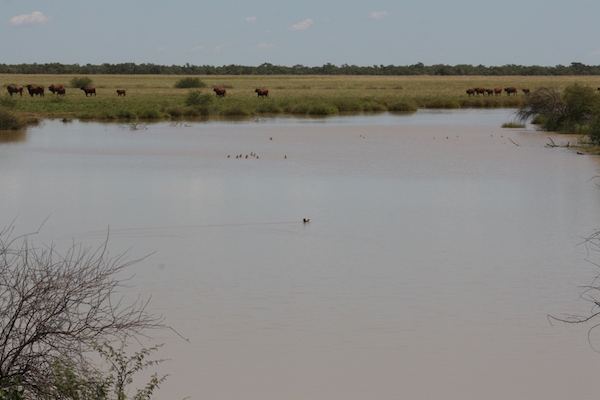 Little Horse dam. In March 2012 there was good widespread rain which filled the dam to capacity. The last time this dam went empty was in the mid-90s.
Little Horse dam. In March 2012 there was good widespread rain which filled the dam to capacity. The last time this dam went empty was in the mid-90s.
During times of low rainfall and drought water levels in dams must be closely monitored.
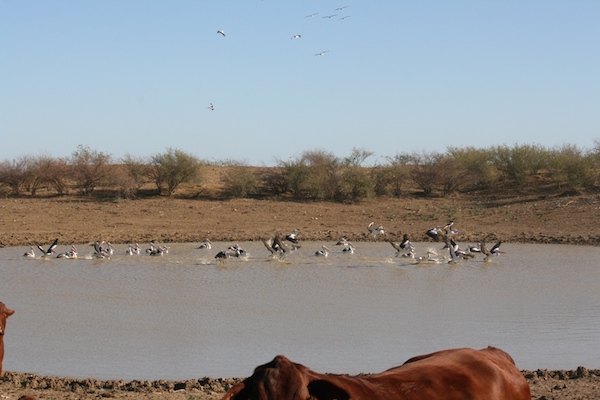 July 2013 Pelicans on the dam. The absence of a wet season with little to no runoff has already affected the dam level. The summer of 2012/2013 also recorded extreme temperatures and multiple heatwaves, all of which caused rapid evaporation.
July 2013 Pelicans on the dam. The absence of a wet season with little to no runoff has already affected the dam level. The summer of 2012/2013 also recorded extreme temperatures and multiple heatwaves, all of which caused rapid evaporation.
By the end of 2013 the dam was rapidly drying up. The water quality was far from ideal and some cattle were starting to bog while trying to get a drink.
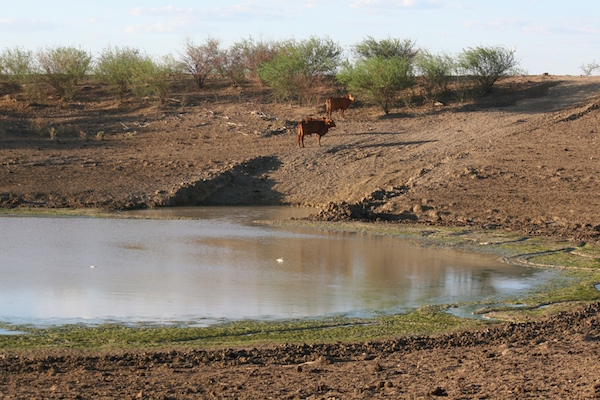 December 2013. The dam is nearly empty. You can see dead fish floating on the surface of the dam.
December 2013. The dam is nearly empty. You can see dead fish floating on the surface of the dam.
It was vital that we set up an alternative water trough near the dam for the cattle as soon as possible. We had a stockpile of polypipe, tanks and troughs on hand for such emergencies. Water was to be gravity fed from a tank in another paddock about 4km away.
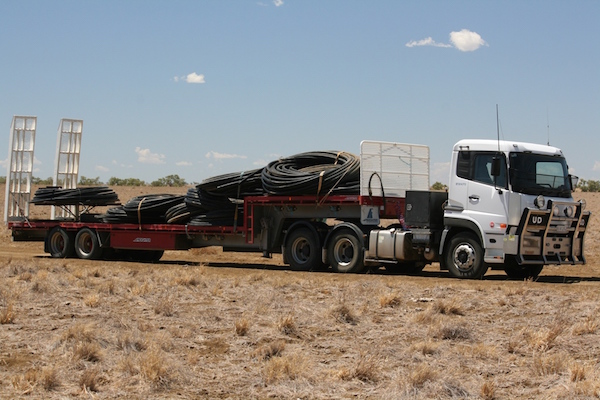 A load of 63mm polypipe loaded on the truck ready to go out to the line. We could fit 10 – 12 coils of poly per truckload.
A load of 63mm polypipe loaded on the truck ready to go out to the line. We could fit 10 – 12 coils of poly per truckload.
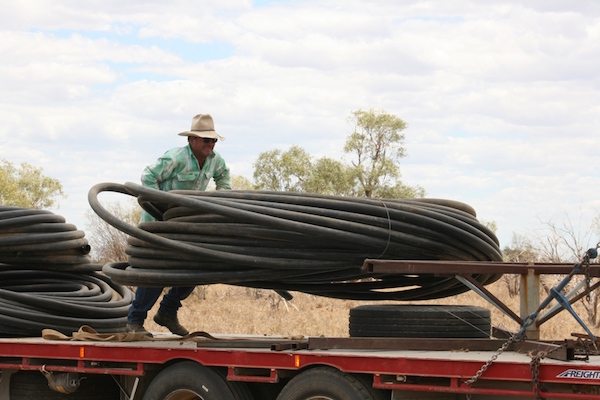 Loading a coil of poly onto the poly spinner. Each coil is 200m in length (and very heavy).
Loading a coil of poly onto the poly spinner. Each coil is 200m in length (and very heavy).
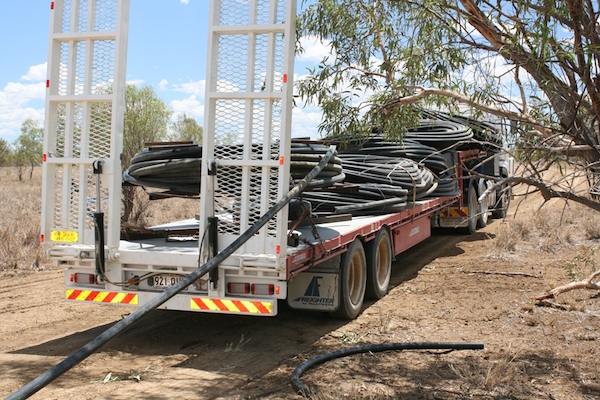 The spinner unrolls the polypipe along the line. Great care has to be taken that the poly doesn’t kink or get caught on the spinner.
The spinner unrolls the polypipe along the line. Great care has to be taken that the poly doesn’t kink or get caught on the spinner.
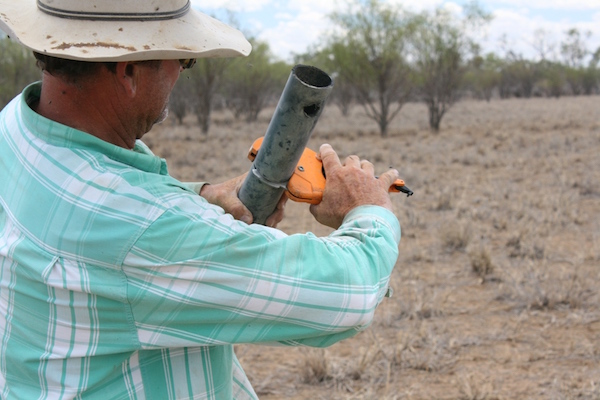 After each 200m coil is laid out the next coil has to be joined. The ends are curt off using a hacksaw or a cutting tool which makes a neat, even cut.
After each 200m coil is laid out the next coil has to be joined. The ends are curt off using a hacksaw or a cutting tool which makes a neat, even cut.
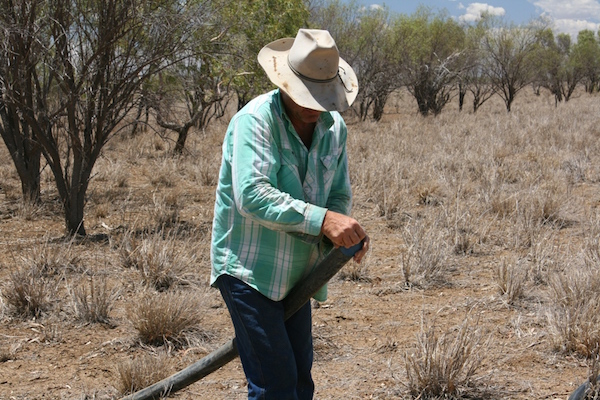 The end of the polypipe is bevelled to allow a neat fit into the poly joiner.
The end of the polypipe is bevelled to allow a neat fit into the poly joiner.
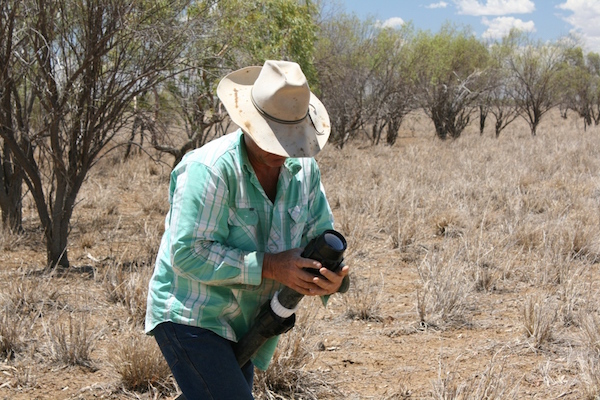 Fitting the joiner to attach the two coils together.
Fitting the joiner to attach the two coils together.
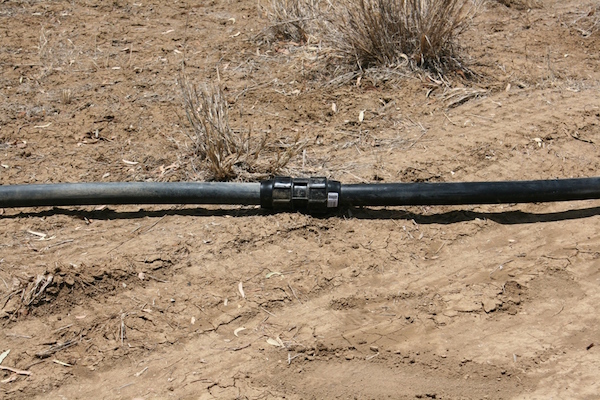
This process was repeated every 200m until we reached the tank 4km away.
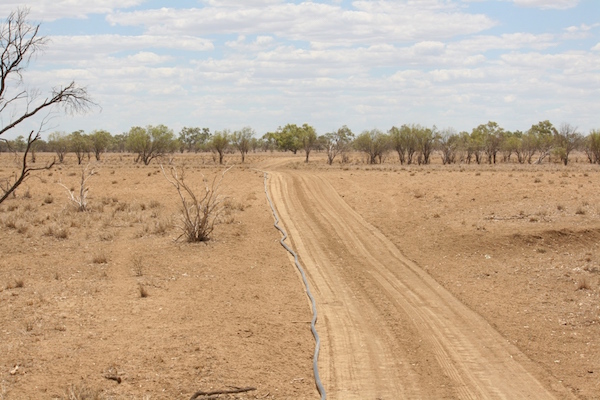
Before connecting the poly into the water source the new tank and trough needed to be put in place.
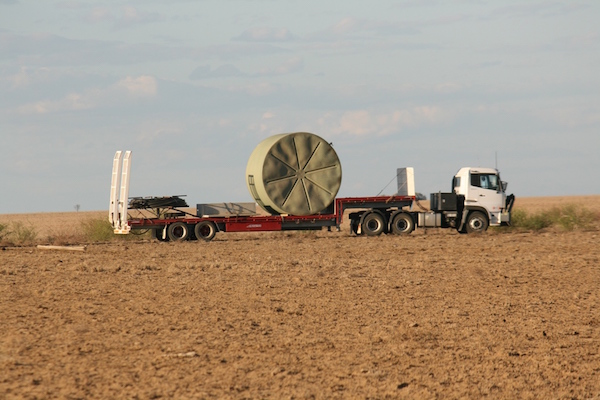
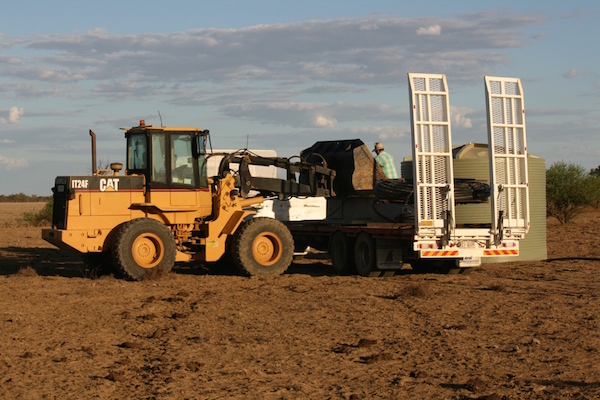
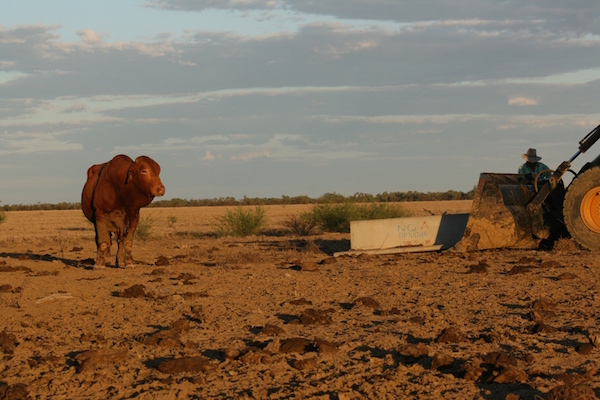
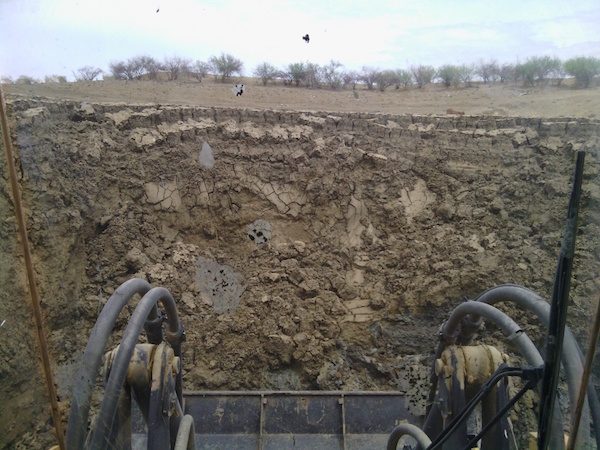
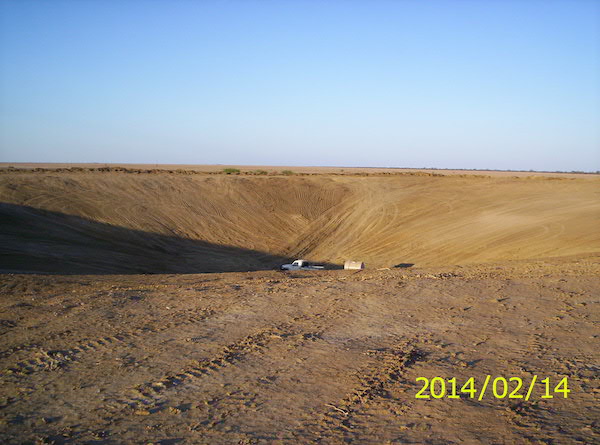
We did receive some rain which put some water into the dam but sadly not enough to make much of a difference.
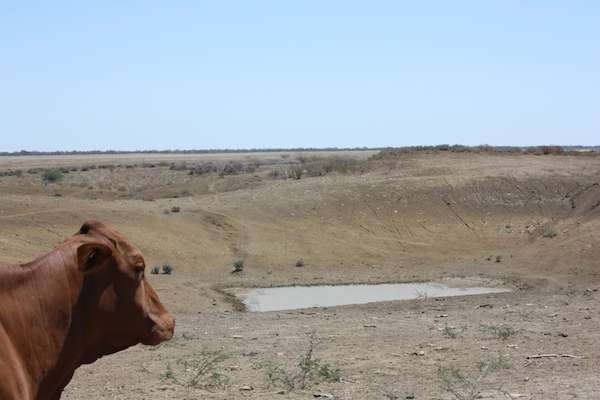
It is now March 2015. The dam is still empty.
